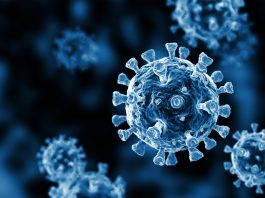A team of scientists have developed an innovative predictive model that employs Artificial Intelligence (AI) to calculate the likelihood of viruses spreading from animals.
Created by researchers from the University of Gothenburg, the novel predictive model applies AI to carbohydrates to thoroughly understand the relationship of the infection process between animals and humans. Their research is published in Cell Reports.
The vast majority of the biological processes that take place within our body involve carbohydrates in some capacity; however, despite this, knowledge of how their processes work is still not well understood. Carbohydrates – known as glycans – are vital in making sure our body works as intended, with fluctuations in their levels producing adverse effects. Interestingly, to cause infection, all viruses utilise glycans as their first contact with our cells, with the COVID-19 causing SARS-CoV-2 being no different.
To examine the potentially crucial role that glycans play in infection, the team manufactured an AI-based predictive model that achieves unprecedented efficiency and accuracy, proficient in forecasting new virus-glycan interactions, such as between glycans and influenza viruses or rotaviruses. The developers of the predictive model believe that it can assist in producing a more comprehensive understanding of zoonotic diseases – where a virus spreads from animals to humans.
Daniel Bojar, the main author of the study and an assistant professor at the University of Gothenburg, said: “With the emergence of SARS-CoV-2, we have seen the potentially devastating consequences of viruses jumping from animals to humans. Our model can now be used to predict which viruses are particularly close to ‘jumping over’.
“We can analyse this by seeing how many mutations would be necessary for the viruses to recognise human glycans, which increases the risk of human infection. Also, the model helps us predict which parts of the human body are likely targeted by a potentially zoonotic virus, such as the respiratory system or the gastrointestinal tract.”
The team are optimistic that their findings can help to produce strategies that mitigate viral infection, with the predictive model potentially helping to develop glycan-based antivirals – viruses that stop the replicability of a virus, therefore helping to tackle future pandemics.
Bojar said: “Predicting virus-glycan interactions means we can now search for glycans that bind viruses better than our own glycans do and use these “decoy” glycans as antivirals to prevent viral infection. However, further advances in glycan manufacturing are necessary, as potential antiviral glycans might include diverse sequences that are currently difficult to produce.
“The work of many groups in recent years has really revolutionised glycobiology, and I think we are finally at the cusp of using these complex biomolecules for medical purposes. Exciting times are ahead.”









